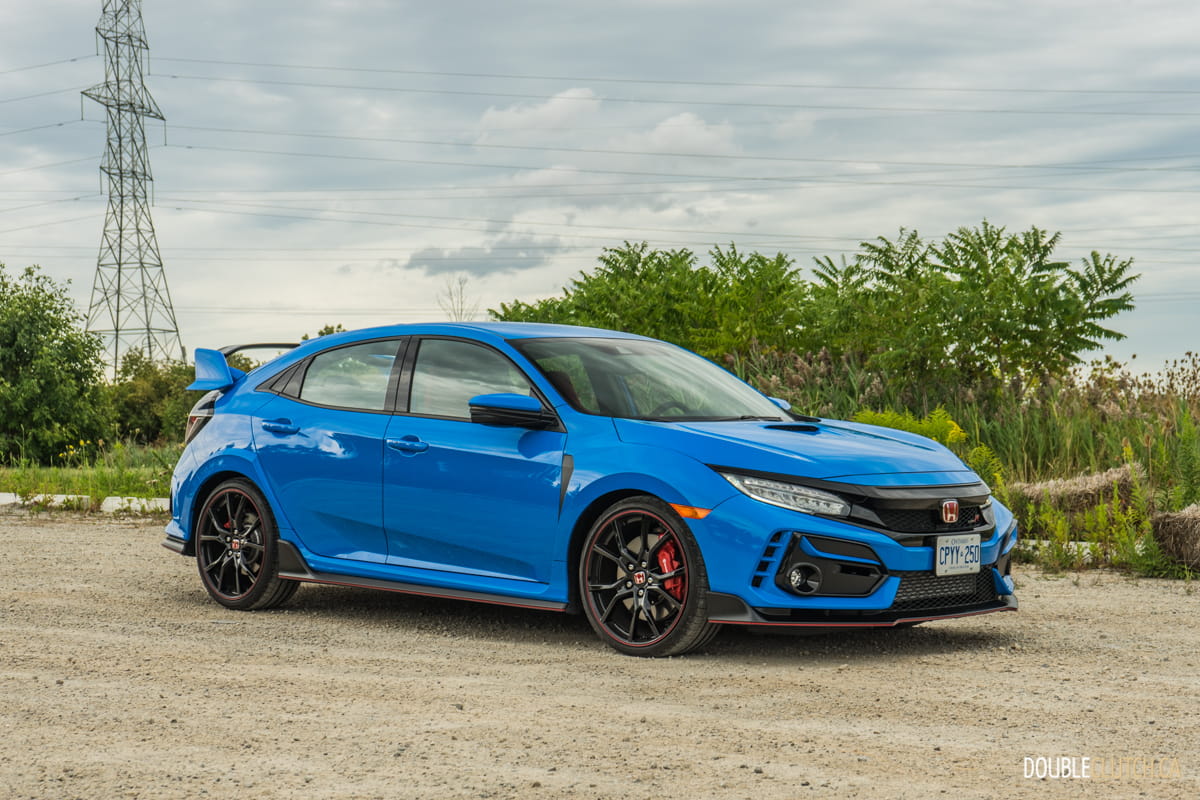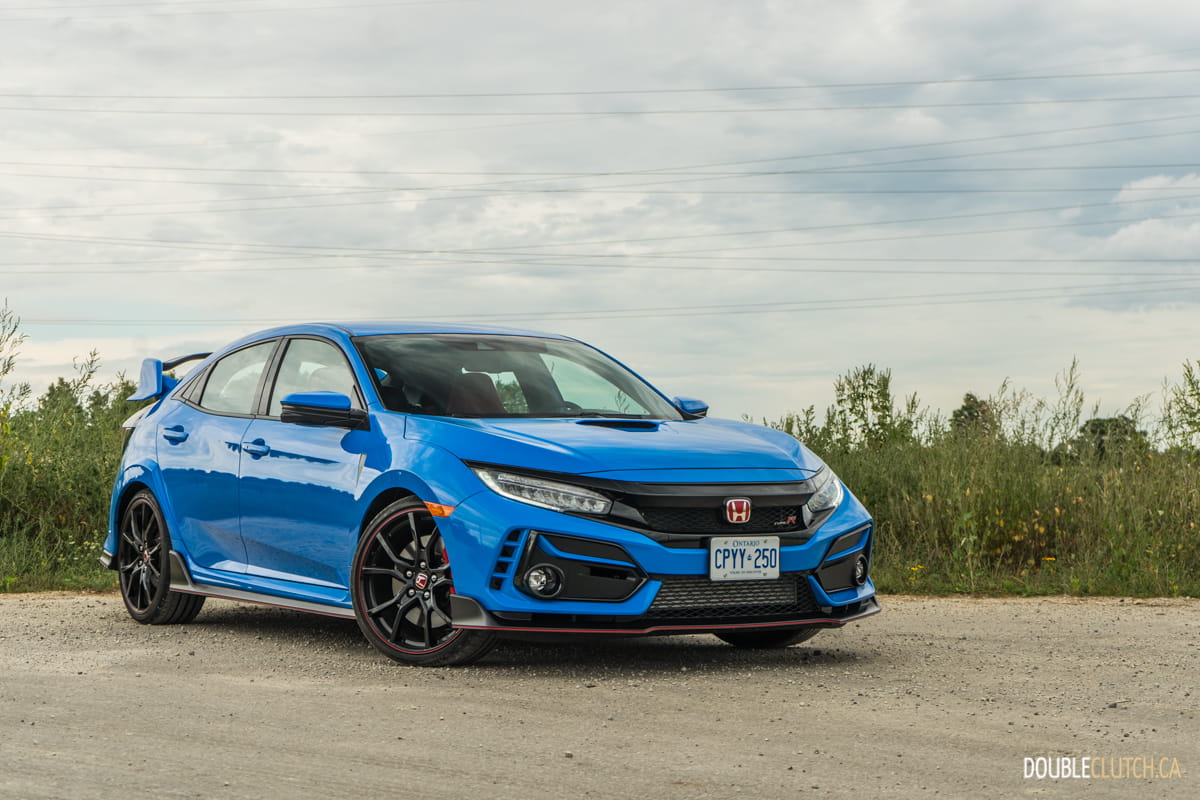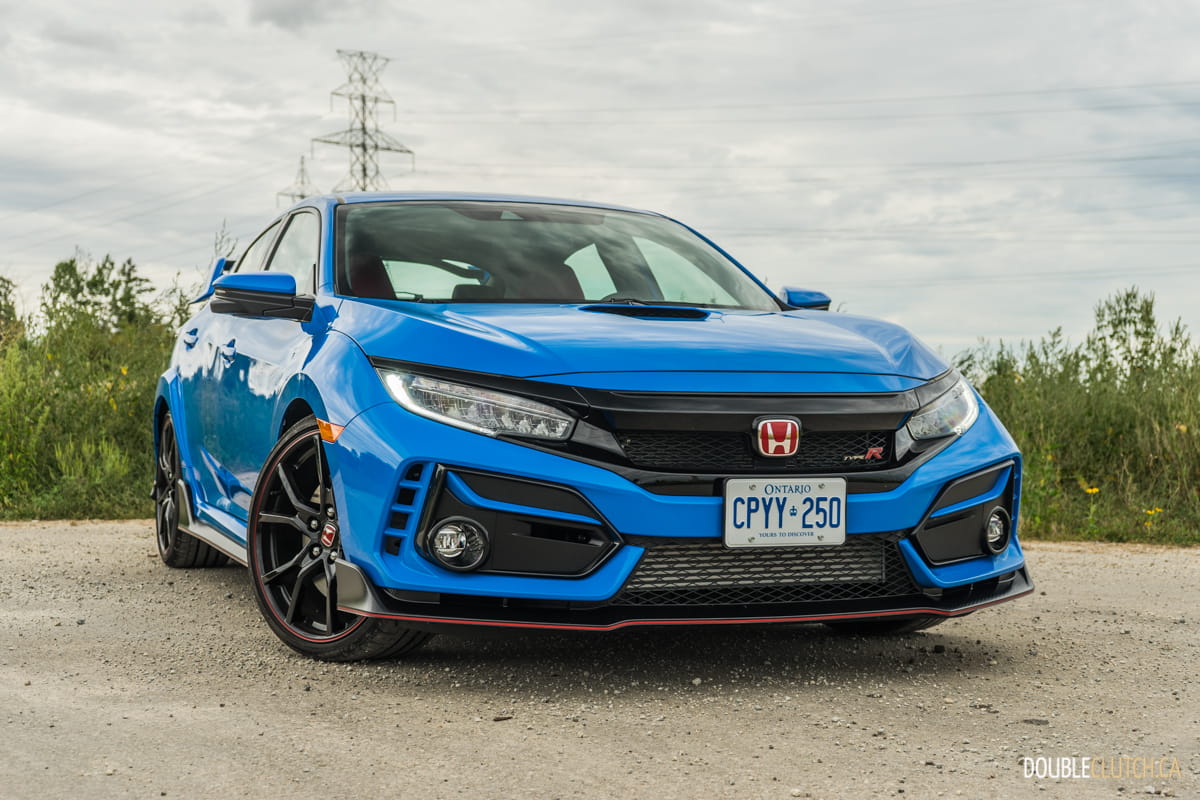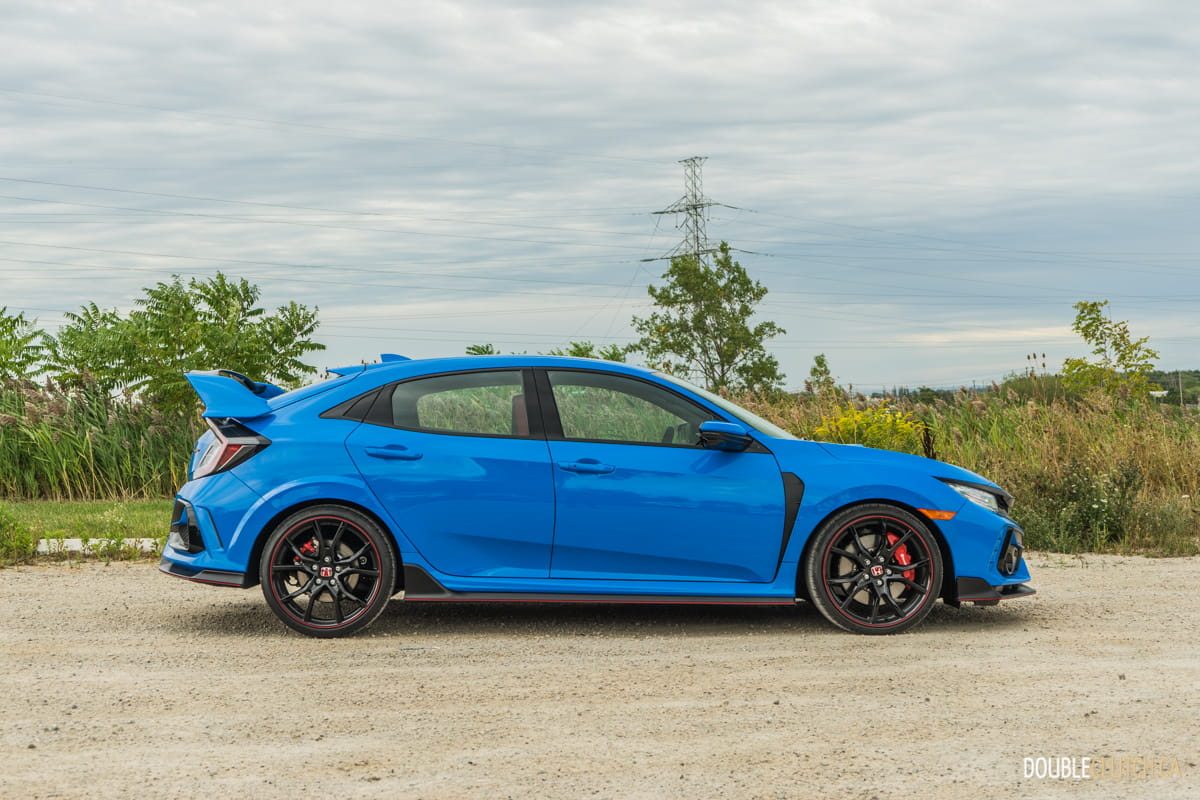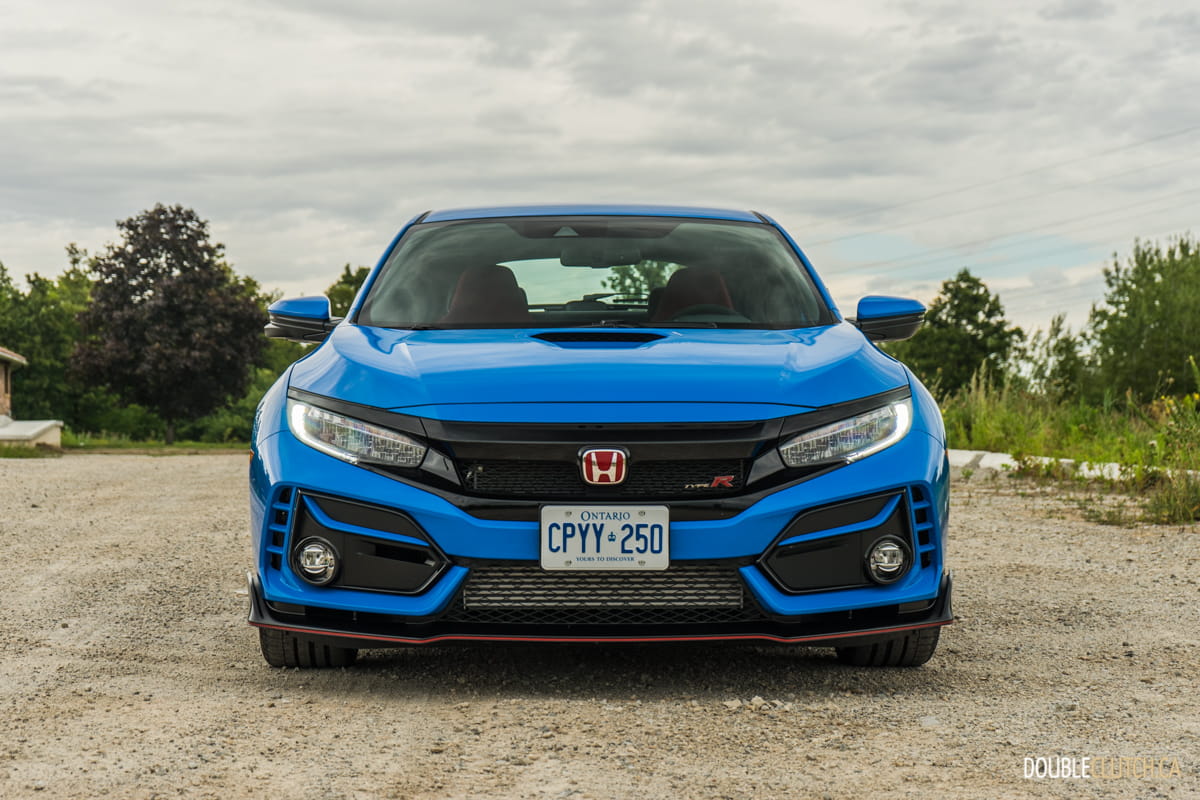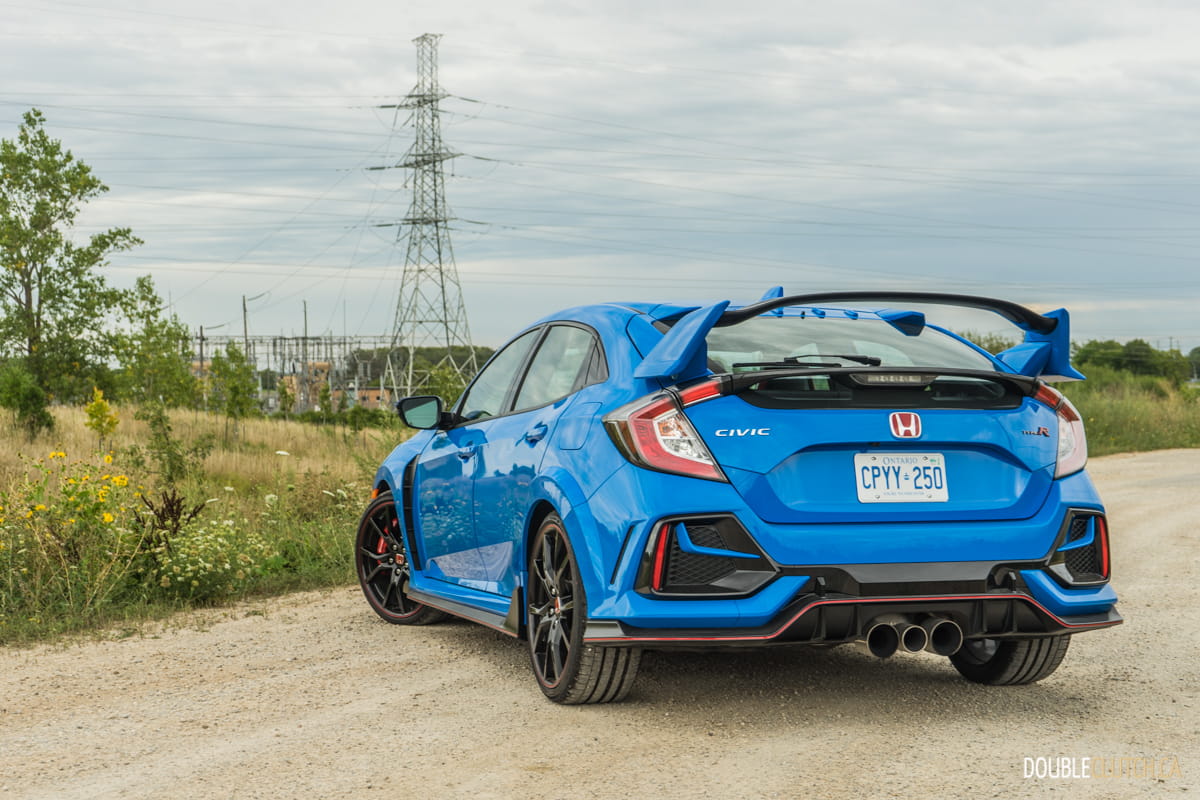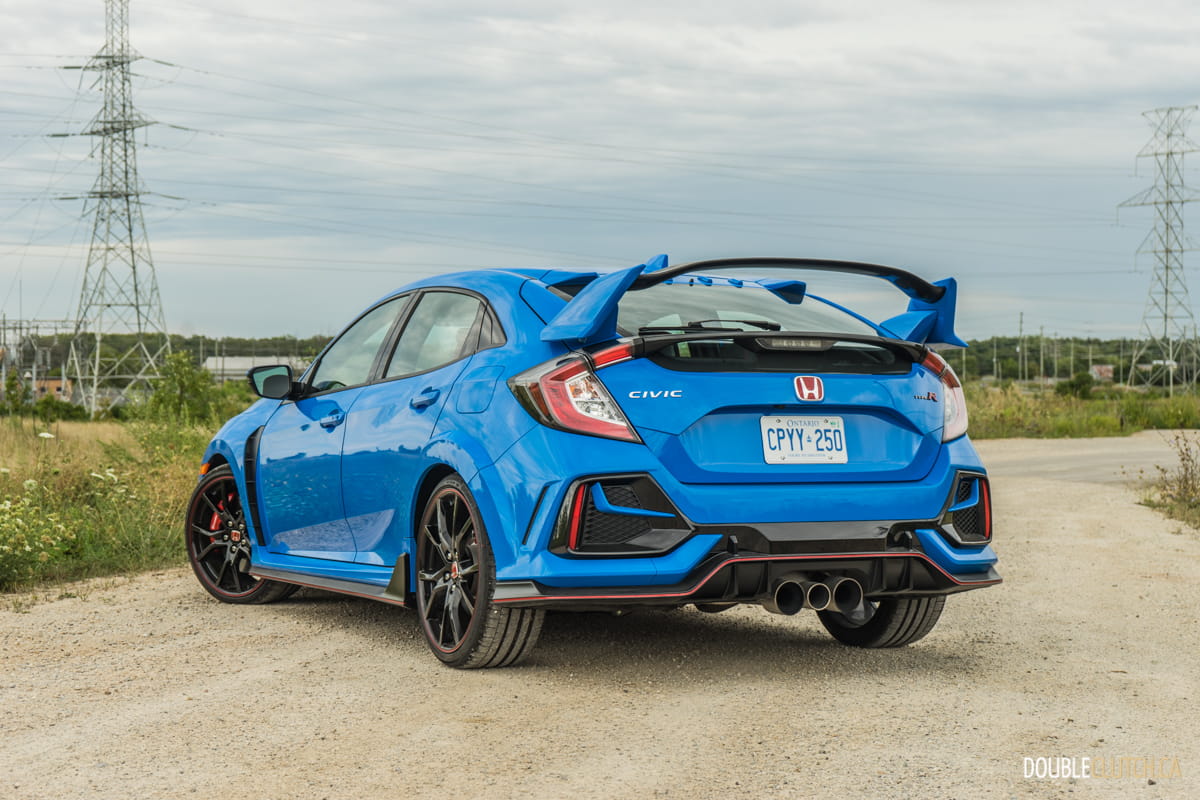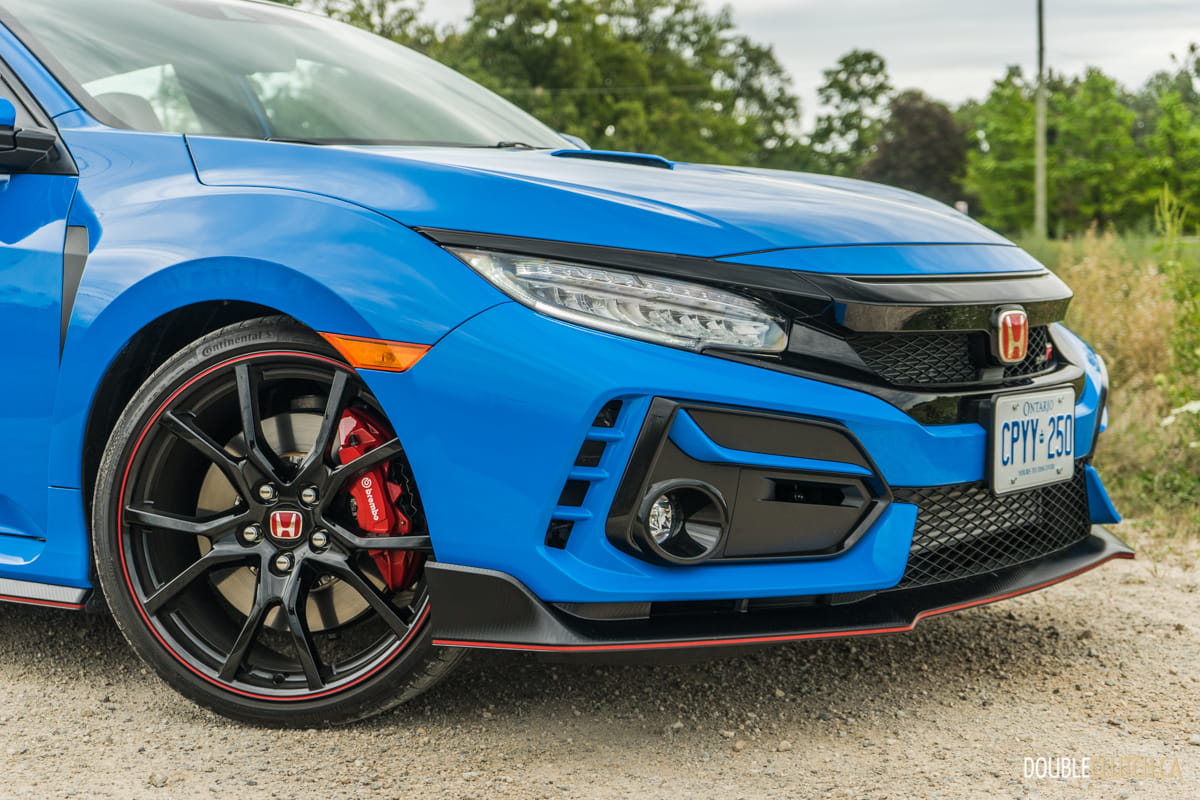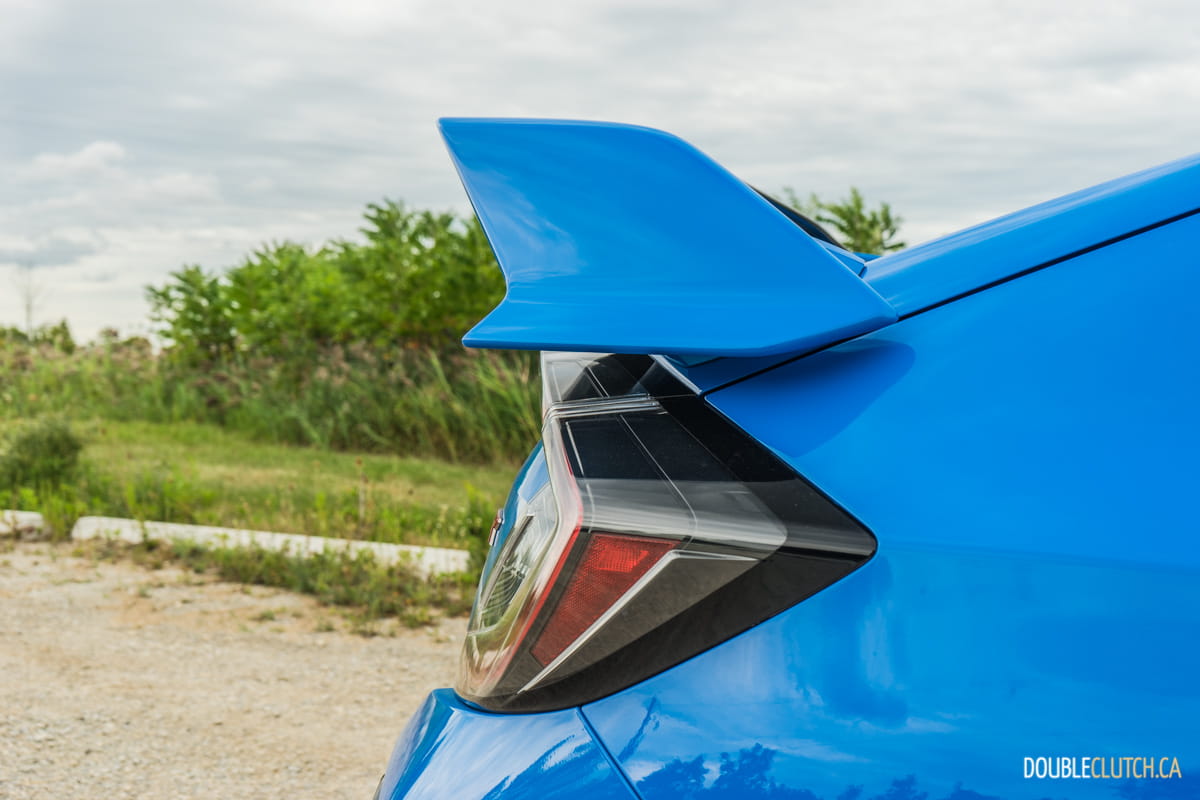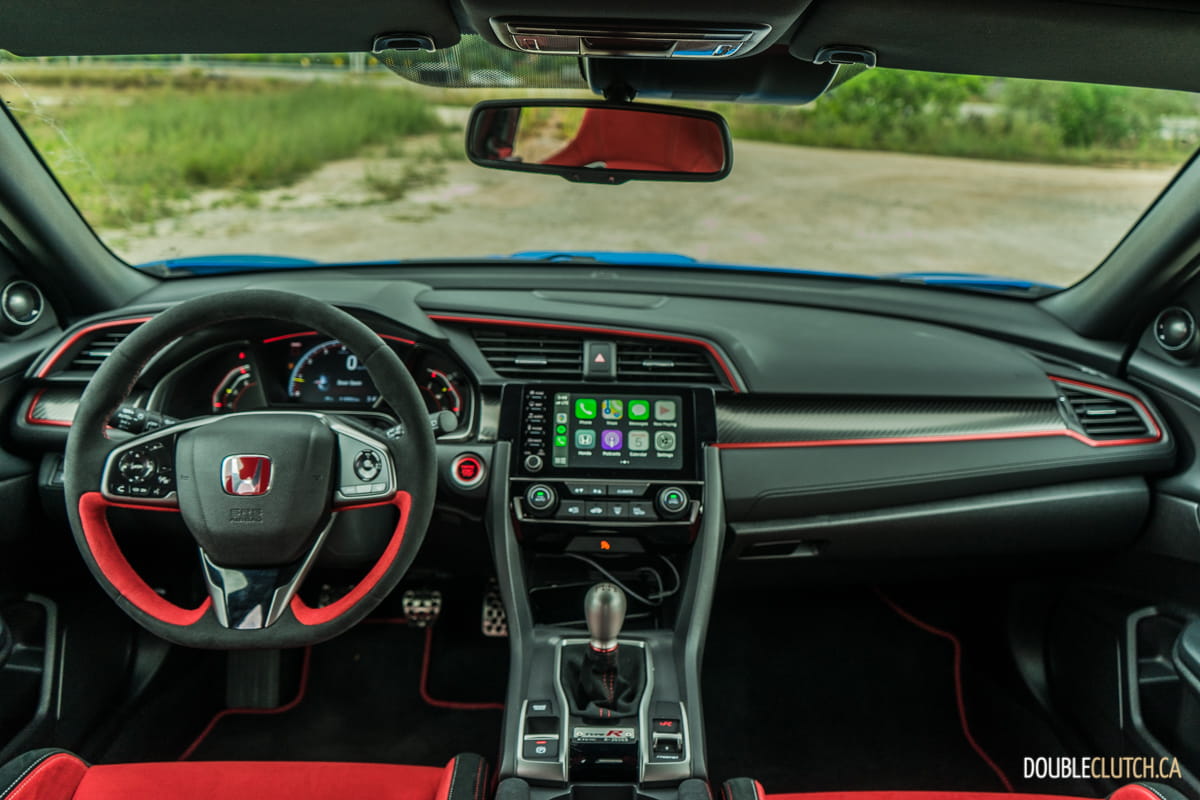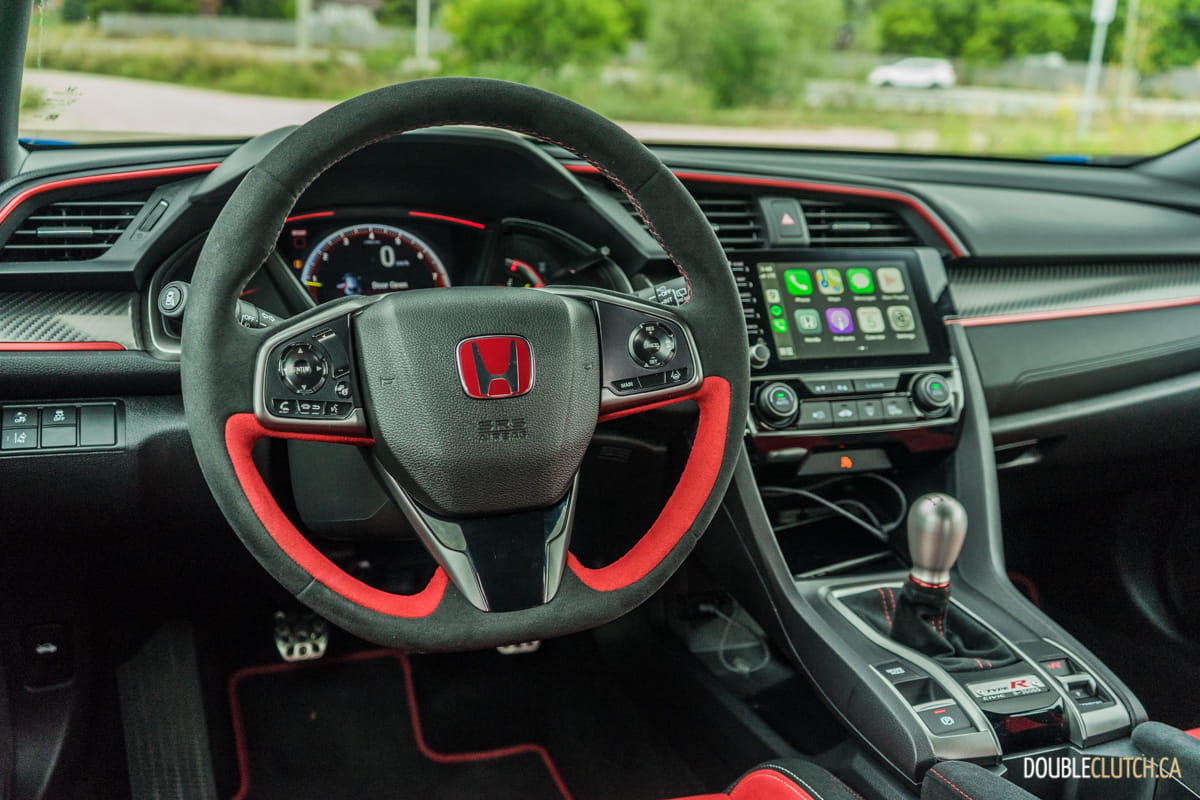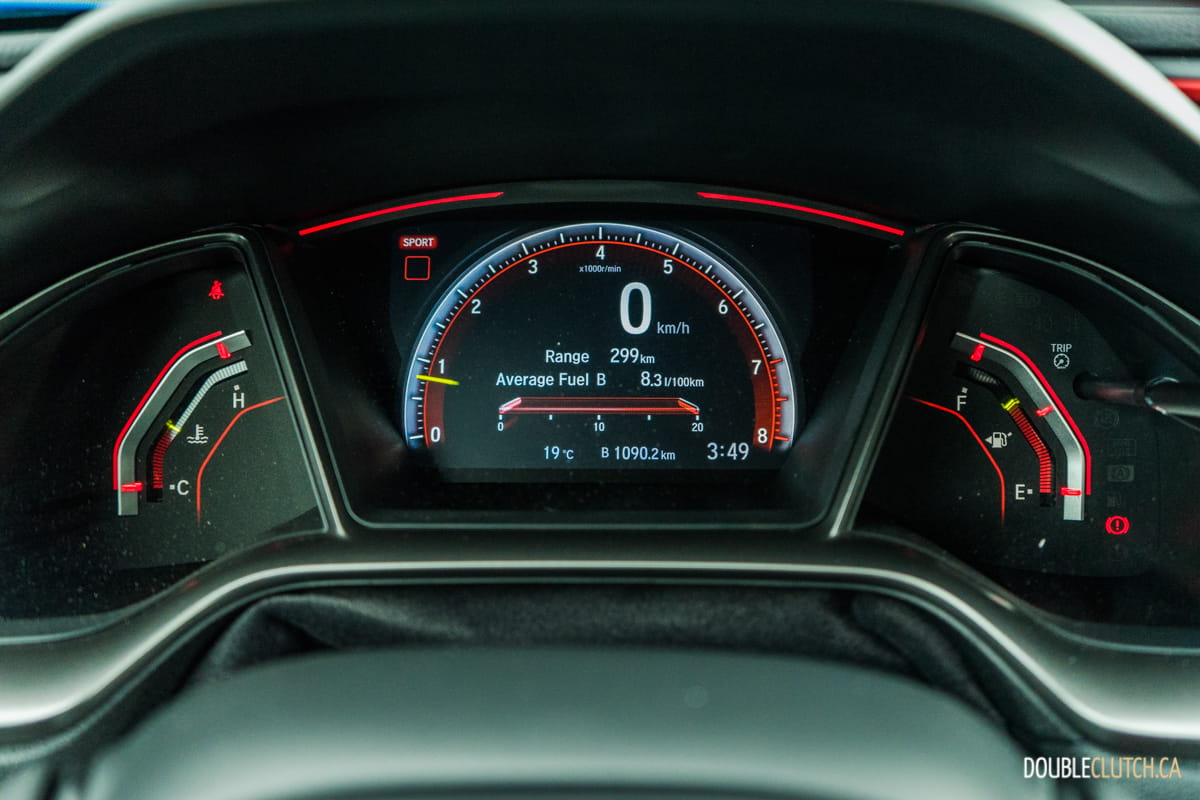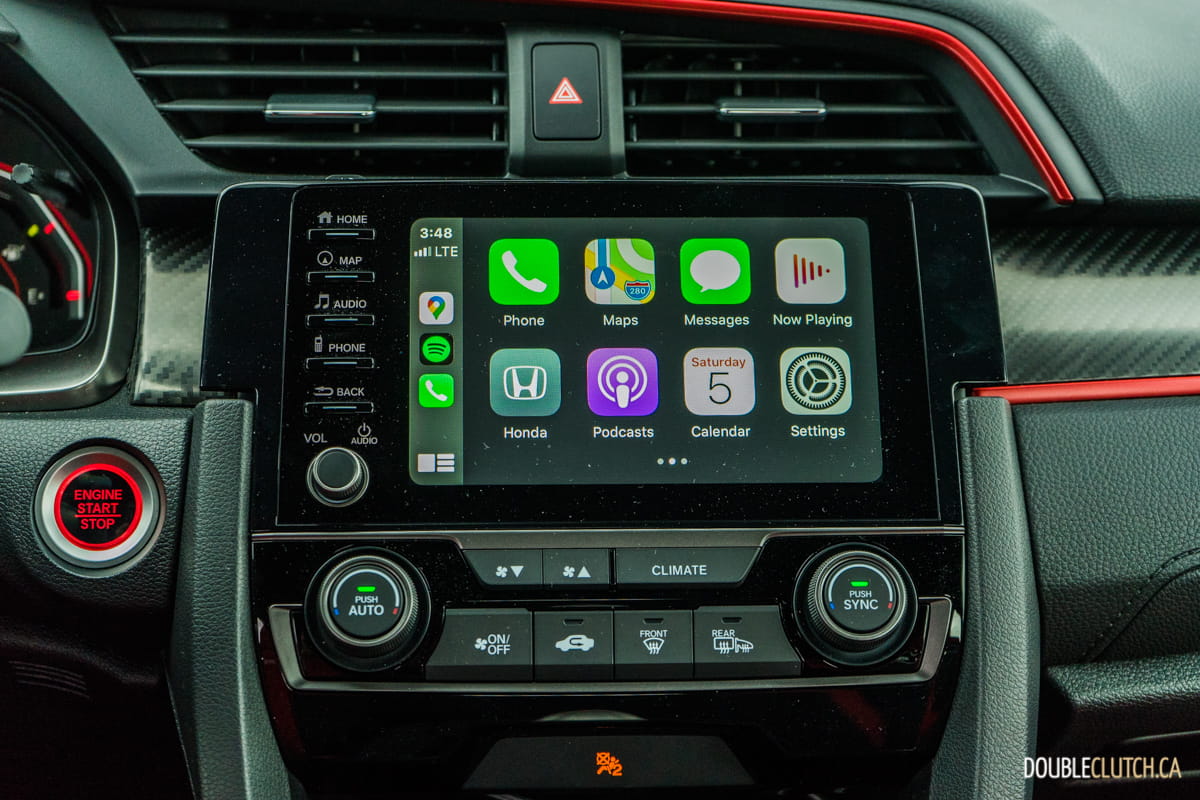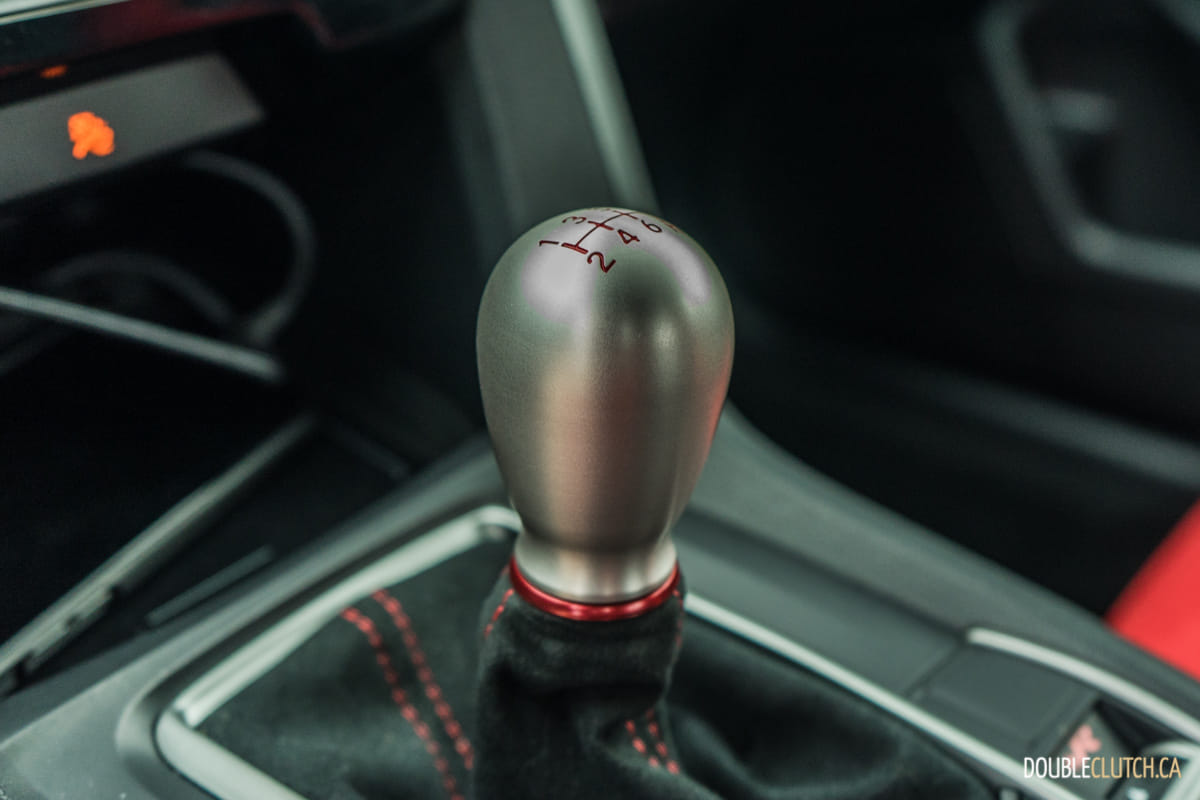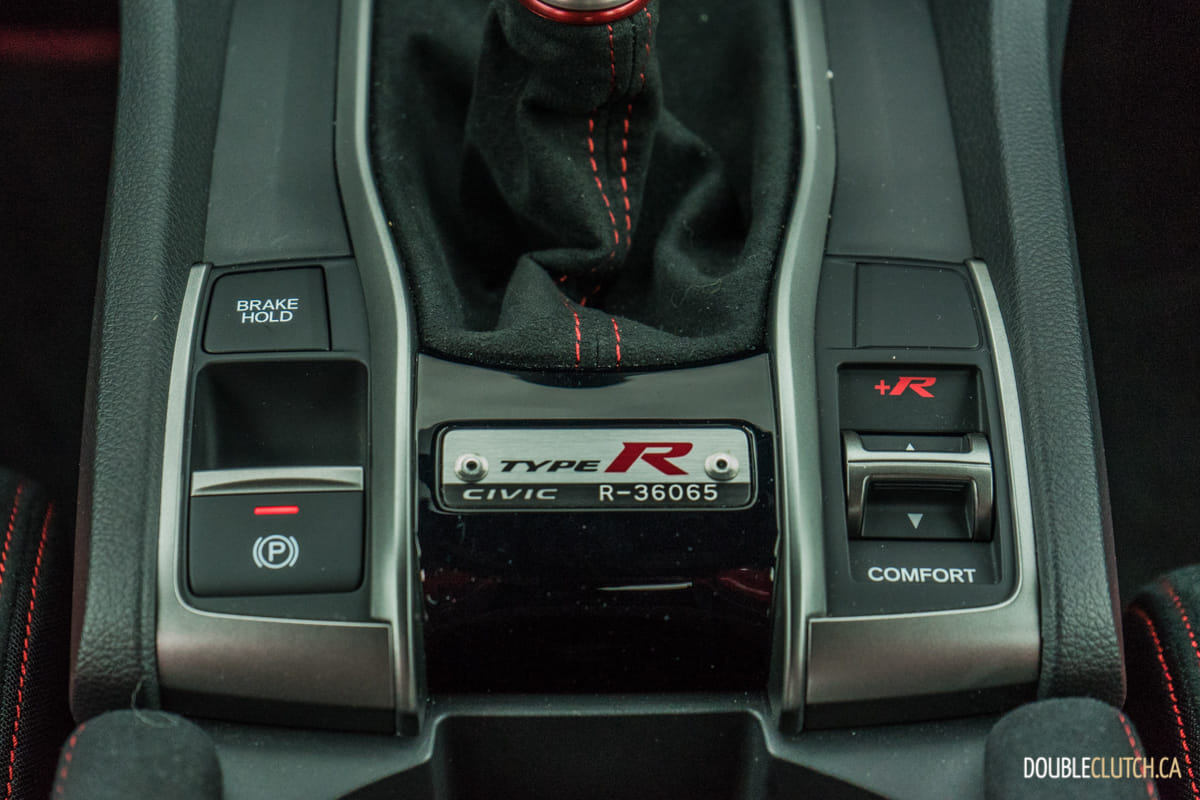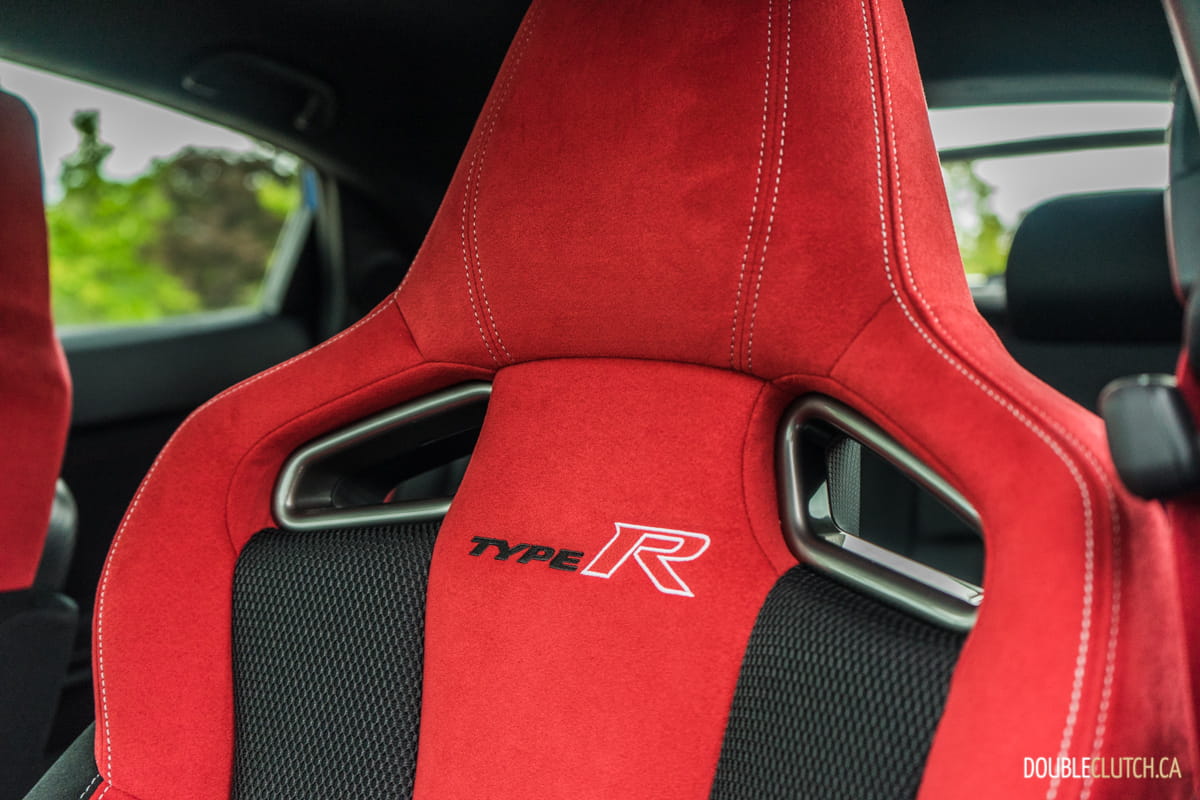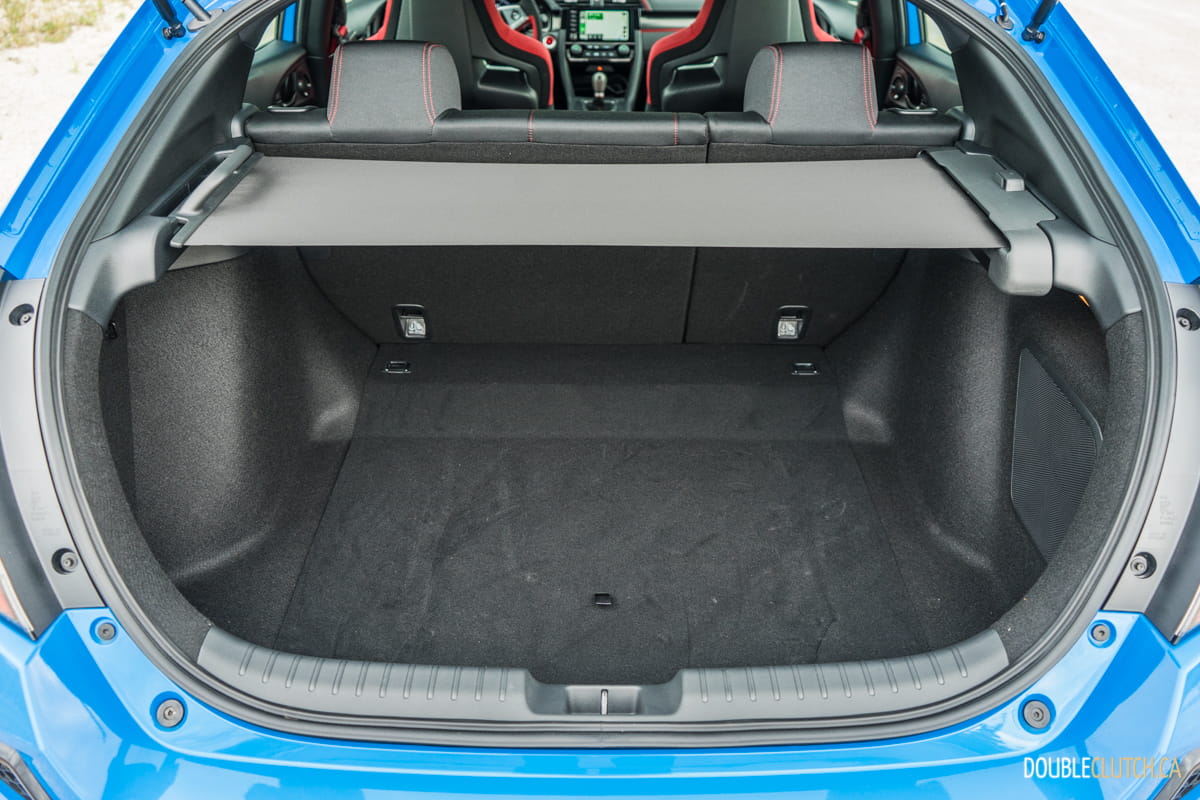Immediately following its introduction to the North American market in 2017, Honda’s Civic Type R was unilaterally voted Car of the Year by DoubleClutch.ca Magazine. We had the opportunity to sample it in a variety of on-road settings, as well as on track multiple times. This actually came as a surprise, considering our lukewarm opinion on the renowned Ford Focus RS. This year, the popular hot hatch has been given a mid-cycle refresh, along with the rest of the Civic line. We jumped behind the wheel of a 2020 Honda Civic Type R for a couple of weeks, to determine whether these mild tweaks are enough to put it back at the top of the podium.
I mean, “back at the top” is a bit misleading, because the Civic Type R has never really fallen out of its position at the top of its class. The Subaru WRX STI (reviewed here) is in dire need of a redesign, the Focus RS has been discontinued, and the Golf R is taking a breather for this model year while waiting for the next generation to show up. Honda has made no compromises with the Type R’s styling, with wild looks all around. The body skirts are aggressive, the 20-inch wheel fitment is massive, and the wing on the rear decklid, though looking completely ridiculous, is functional. Honda is insistent that every bit of aero on this car is indeed, functional.
One of the most significant updates to the Civic Type R for 2020 is an improvement of the adaptive dampers. The old dampers would react twice per second, and now can react and adapt 20 times per second, at a rate of 20Hz. In its regular “Comfort” setting, the Type R’s ride is far more subdued and relaxing than the model that it replaces. The dampers have also been improved in the car’s performance settings, which are said to make the car turn in sharper, and remain more planted when coming out of corners. It does feel a smidge crisper than the previous model, and steering feedback is just plain excellent.
Output still comes from the same 2.0-liter turbocharged inline four-cylinder, with 306 horsepower and 295 lb-ft. of torque. There is absolutely some noticeable turbo lag off the line, but once the Type R gets going, it accelerates with confidence and feels like the power numbers are underrated. Torque steer is minimized to an almost-zero point, impressive for a front-drive setup. Power is more than sufficient, but the real beauty of this car is how it handles and grips the road. The rubber-band tires on 20-inch wheels are Continental SportContact 6, which compliment the chassis’ roadholding ability nicely.
The only available gearbox is a six-speed manual, with rev-matching tech built in. Don’t worry purists, this can be turned off if you don’t like it, but if it’s left on, it makes for perfect downshifts every single time. This can be a godsend during the everyday commute, when you just want to relax – though we don’t know why you’d drive the Civic Type R if relaxation is on the agenda. There’s a new shifter this year, a more traditional Honda knob, and this just might be the best clutch and shifter combination on the market today at any price point.
The Type R is a car that does things no front-drive car should, and a track day with one last summer sealed the deal for me. We had it on track back to back with my own 2004 Honda S2000, and while the differences were significant, the mission of the Type R became clear. While the S2000 with its simplistic rear-drive chassis and high-revving engine communicated like no modern car does, the Type R was a total sledgehammer that would set lap time after lap time without skipping a beat. The steering is impressively quick, and the rack has excellent feedback communicated to the driver’s fingertips. This is a car that just about any driver can get behind the wheel of and drive hard.
The 2019 model saw an improvement to the infotainment system, which migrated over from the current Accord (reviewed here). The old Civic system had no volume knob or any physical buttons at all, and thankfully, this has been fixed. There are now hard buttons for major commands, as well as said volume knob. The native Honda system is still slow to respond and in need of a significant software update, but if you plug in with Apple CarPlay or Android Auto, you won’t really notice. The digital instrument cluster also offers some driver information, but again, this system is clunky to use and not exactly well designed.
Honda has always offered excellent driving positions in their vehicles, along with decent visibility. The manually adjustable performance seats in the Type R aren’t heated or cooled, but they’re incredibly supportive and comfortable. The integrated headrests have been set a bit too far back for those doing mostly street driving, as they’re designed to support helmets, but they’re still perfectly manageable. Visibility is good, and the rear wing doesn’t really impede on the outward view at all. Practicality is better than the Corolla Hatchback, with a larger cargo area and a lower load floor.
The 2020 Honda Civic Type R is priced at $43,690, with only three colour options available. The classic Championship White and Crystal Black Pearl are standard, while the equipped Boost Blue on our test car is an additional $500. This year, the Civic Type R also gets the Honda Sensing safety suite as standard issue, which includes adaptive cruise control, automatic high beams, collision warning, lane departure warning, and lane keeping assist. Since no options are available on the Type R, the performance seats, automatic climate control, intelligent key, and all are standard fare.
At nearly $44,000, the Type R is nearly $10,000 more than the Hyundai Veloster N (reviewed here), which stands as a bit of a middle ground between the likes of the Civic Si and the Type R. The fully loaded Subaru WRX STI comes in at $47,395, which is more money for a car that is inferior in every way other than offering all-wheel-drive. The main issue with the Type R is the aesthetics, which is fairly subjective. While the Boost Blue does look pretty cool, as a 31-year old professional, I definitely feel too old to be driving a bright Civic with aggressive aero and a massive wing.
That aside, the 2020 Honda Civic Type R is bar none, a marvelous hot hatch. It’s a delight on the track and if your daily commute involves a few twists and turns, an absolute joy on the street. It’s a bundle of fun that few manufacturers are able to compete with these days, and Honda’s level of passion for the driving experience shows here. With the departure of the manual transmission on the Accord 2.0, the Type R just went up a few notches for the dad (or mom) in mid-life crisis mode. No matter how you look at it, this car is still at the top of its class.







